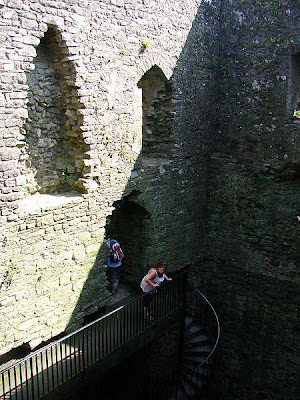


On Saturday morning we drove along the A30 and had a walk alongside a beautiful river and hedgerow and through a small wood,



Then we went to Lydford Castle. Lydford was once an important town and one of the four Saxon Boroughs of Devon. It was big enough to have a mint in the days of Ethelred the Unready.

In the reign of Edward the Confessor the town was the most populous in Devon after Exeter. The Domesday Survey recorded that forty houses had been laid waste in the brief time since the Norman Conquest and the town never recovered its former prosperity. Nowadays it is a delightful little Devon village.

The castle dates from the late twelfth century and by the thirteenth century it had been fixed as the prison for the Stannaries and the meeting place of the Dartmoor Forest Courts. In 1512 it was described as "one of the most heinous, contagious and detestable places in the realm" and Lydford Law was a byword for injustice. By Cromwell's time the three storey castle was in ruins but it was restored in the 18th century and once more used as a prison.


This stone jutting out of an internal wall had a hole in it which obviously ran some way up the wall.

The castle bailey.

The perpendicular church of St Petroc at Lydford.

This is the Castle Inn, Lydford. We briefly stepped in with the idea of having a bite to eat but whilst the menu looked attractive it was a bit too expensive for a Saturday snack.


So we went down the road to a pleasant little farm shop and cafe where sausage toasties and homemade soup (carrot and honey, excellent) were duly ordered.



On the way back the Police directed us off the A30 and we wound our way through the Devon lanes instead. Apparently a caravan had broken down, somehow blocking the whole A30, and traffic was at a standstill with people out of their cars.
No comments:
Post a Comment